No doubt you are all aware of Porsche’s links with VW and the fact the former produced what’s generally considered to be the ultimate air-cooled engine – namely the 3.6-litre flat-six. But did you know the Americans also wanted a slice of horizontally opposed air-cooled action back in the Sixties, not that the results were anywhere as successful as the German-made products…
We’re talking, of course, about the quirky Chevrolet Corvair. Launched in 1959, it was meant as a Beetle rival and combined the VW’s rear engine layout cloaked in a four-door body the size of a Mercedes. It initially boasted a 80bhp 2288cc flat-six air-cooled unit, although capacity grew to 2377cc soon after launch and swelled to 2684cc by the time production ceased in 1964. The real screamer in the range was the ’62-on 150bhp turbo version.
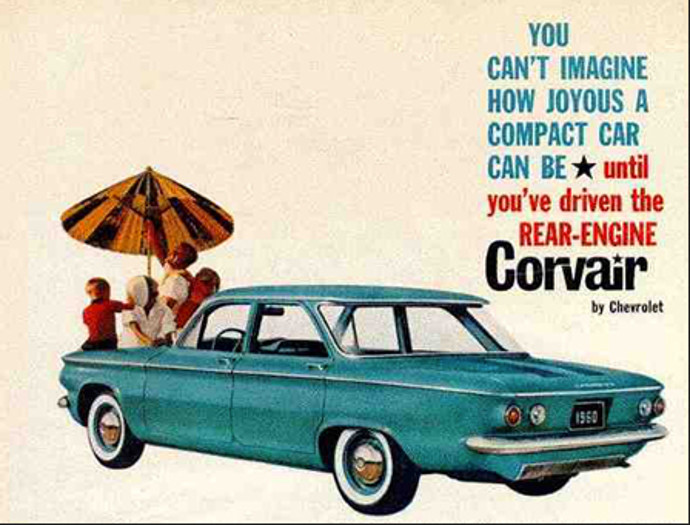
No other American car looked like it, or drove like it for that matter – a point quickly picked up on by political activist Ralph Nader. Nader in his book, Unsafe at Any Speed, panned the car’s handling which no doubt sped up its demise.
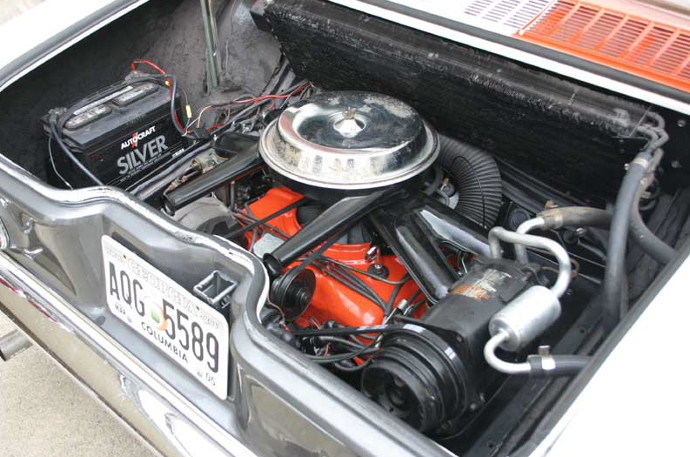
Ironic really, considering the reason manufacturers such as Subaru and Porsche have stuck with the ‘boxer’ engine configuration is because of the handling benefits gleaned from its lower centre of gravity.
So, back to the Corvair story. Over a million were made but it was a flop in the States, lots were scrapped and, you guessed it, it was the shrewd VW enthusiasts that were left picking over the pieces. Notably that torquey and very tunable six-cylinder powerplant – which is why custom magazines at the time were crammed with step-by-step guides on how to carry out a Corvair conversion on a VW.
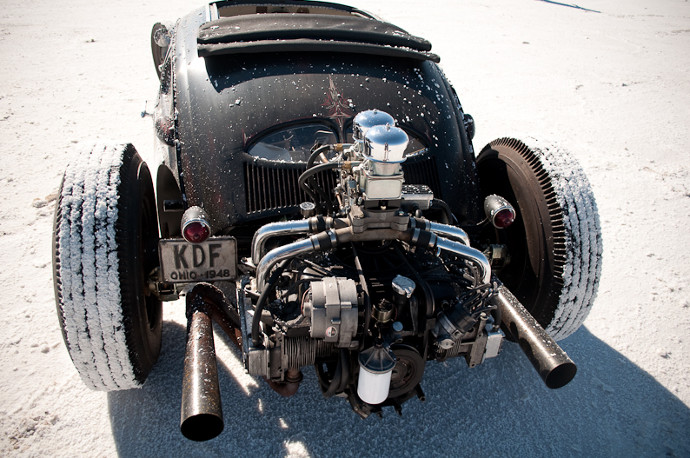
And it’s easy to see the attraction over the Wolfsburg product – the Corvair unit had twice the displacement at very little increase in weight – and because of the surplus stock of Corvairs at breakers, they could be picked up for pennies at the time. And considering it was a six-pot, it was hugely less expensive than dropping in a six-cylinder Porsche powerplant. Needless to say the Chevy engine subsequently found its way into everything from Karmann Ghias to aeroplanes, Beetles and buses.
Where it went down particularly well, though, was among the buggy fraternity who were no doubt won over by the spectacular images of Steve McQueen and Faye Dunaway riding the dunes on Crane Beach, Massachusetts in the 1968 film The Thomas Crown Affair.
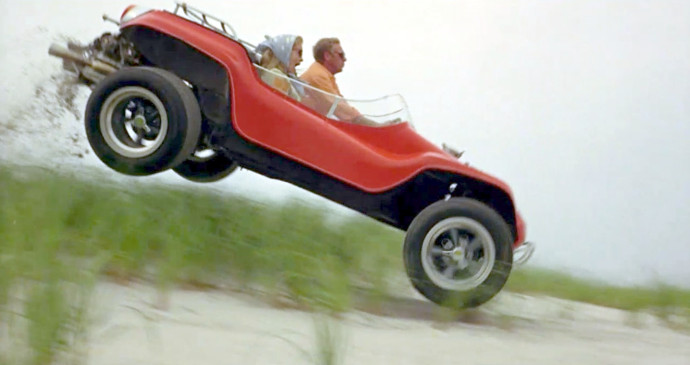
The buggy in question was a highly modified version of a Meyers Manx built by Con-Ferr in Burbank, California with a 140bhp Corvair engine mated to a custom made adapter so that it could fit a VW Beetle rear axle.
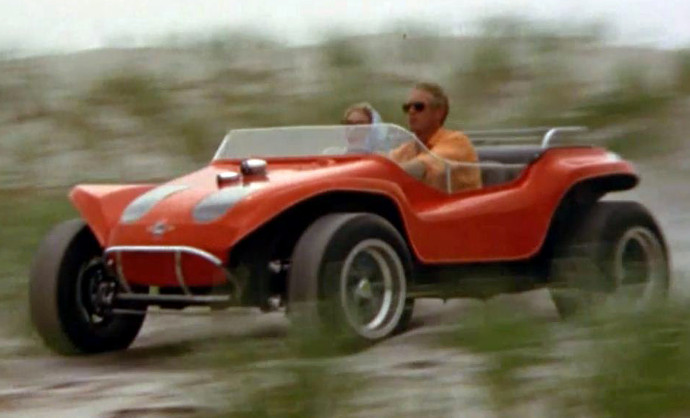
Word had it that McQueen wanted a Porsche engine installed, but the film’s budget wouldn’t allow it so he had to settle for the US-derived engine instead. Buggy building legend Bruce Meyers was obviously impressed with the end result, though, because soon after the film’s release he started building Corvair-engined Manx buggies in conjunction with Con-Ferr. Called the Manx-Vair they were given the serial number ‘CC’ as opposed to ‘CV’ for the Volkswagen powered buggies.
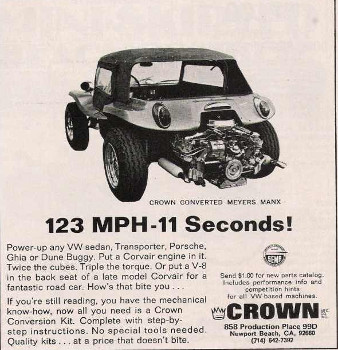
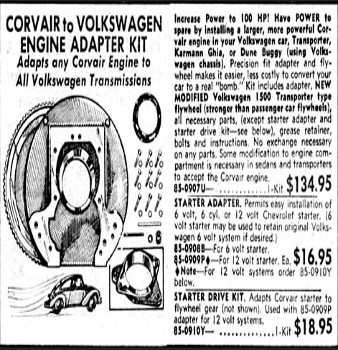
So the next time you see a buggy, prick up your ears and take a closer look because it may not actually be a VW engine out back. That said, the Corvair phenomenon really only hit the US Veedub scene – us Brits have always been a lot more loyal to the VW brand!
If you want to find out more about Bruce Meyers, read our exclusive interview here.
Ian
The opinions expressed here are the personal opinions of the author and do not necessarily represent the views and opinions of VW Heritage

